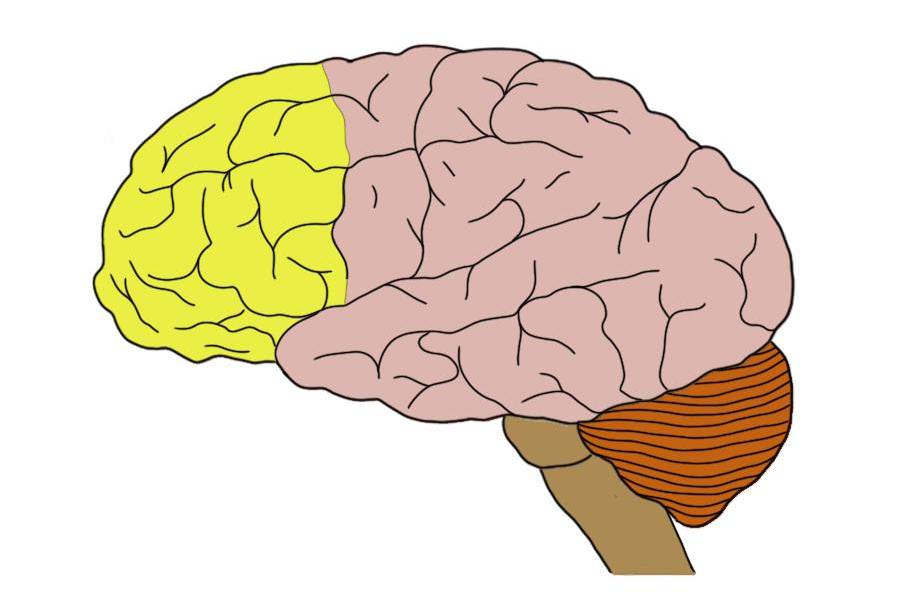Know your brain: Prefrontal cortex

Where is the prefrontal cortex?
The prefrontal cortex is the section of the frontal cortex that lies at the very front of the brain, in front of the premotor cortex.
The prefrontal cortex can be divided into several subregions. The method of anatomically subdividing the prefrontal cortex varies depending on the source, but common demarcations include the dorsolateral, dorsomedial, ventrolateral, ventromedial, and orbitofrontal regions.
What is the prefrontal cortex and what does it do?
The prefrontal cortex makes up over 10% of the volume of the brain, and thus is involved in many functions—more than can be summarized in a short article. There is one category of cognition, however, that the prefrontal cortex is probably best known for: executive function.
The term executive function is defined slightly differently depending on where you find the definition. In general, executive functions focus on controlling short-sighted, reflexive behaviors to take part in things like planning, decision-making, problem-solving, self-control, and acting with long-term goals in mind. They are higher-level cognitive processes that people tend to display greater proficiency in than other animals—thus you could argue they are some of the functions that truly help to make human cognition unique.
Patients who suffer damage confined to the prefrontal cortex often display normal movement, sensory perception, and even intelligence. But they frequently experience deficits in executive functions, along with personality changes, abnormalities in emotional responses, and general difficulty functioning in their daily lives.
The prototypical case of prefrontal cortex damage is Phineas Gage. Gage was a railroad foreman in the mid-1800s who somehow survived having a metal rod shot clear through his skull and brain during a work-related accident. Much of Gage's left frontal lobe and prefrontal cortex were destroyed. It has been suggested that Gage was a responsible, temperate, hard-working man before his accident and afterwards he became a capricious, irreverent, trouble-making drifter. According to this account, he seemed to have lost some of the ability to inhibit base impulses and was unable to act prudently—the types of changes we might see in someone who had a deficit in executive functions. The exact changes in Gage's personality, however, are now somewhat debated, and it is unclear if the damage he sustained was confined to the prefrontal (or even frontal) cortex.
Even if we don't use Gage's case as a main piece of evidence to link the prefrontal cortex to executive functions, however, there are still a number of other case studies and a great deal of experimental evidence to support the connection. Patients with prefrontal cortex damage tend to perform poorly on tasks that require the use of long-term strategies and the inhibition of impulses. They also often display short-term memory deficits, which may help to explain some of their difficulties in planning.
Patients with prefrontal cortex damage can experience blunted emotional responses, which may be another factor that negatively affects their ability to make decisions. To understand how this works, just imagine the emotional reaction you might have to thinking about doing something you know is a bad idea—like cursing out your boss at work when you're angry. Really giving some consideration to doing this might cause you to get a bit anxious, and because this emotion doesn't feel good, it can help you make the (probably wise) decision to avoid the behavior. Patients with damage to the prefrontal cortex sometimes display abnormalities in experiencing these types of emotional responses, which then presumably makes it more difficult for them to make good decisions.
As I mentioned, a large region like the prefrontal cortex that has such dense interconnections to other areas of the brain undoubtedly has many functions (some known and some not yet known) beyond what I've mentioned here. Additionally, some argue that the category of executive functions is too broad to tie to one region of the brain. Regardless, it is often implied that the prefrontal cortex contributes a great deal to making us who we are as individuals. According to this perspective, if you took away the prefrontal cortex we would be ruled by our desires and impulses, lacking an ability to plan for the future or think about the consequences of our actions.
References (in addition to linked text above):
Olson CR, Colby CL. 2000. The Organization of Cognition. In: Kandel ER, Schwartz JH, Jessell TM, eds. Principles of Neural Science, 5th ed. New York: McGraw-Hill.
Petrides M and Pandya DN. The Frontal Cortex. In: Mai JK and Paxinos G, eds. The Human Nervous System. 3rd ed. New York: Elsevier; 2012.


